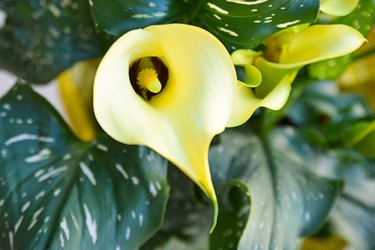
Prized for the voluptuously curvaceous blooms that earned artist Georgia O'Keefe the title "lady of the lilies," calla lilies (Zantedeschia spp.) grow as perennials in U.S. Department of Agriculture plant hardiness zones 7 through 10, depending on variety. The most common callas, however, are hybrids (Zantedeschia hybrida) grown as potted plants. Whether you keep them outdoors in USDA zones 9 and 10, or as houseplants in colder climates, easy-care potted callas -- also known as arum lilies -- don't belong near small children or pets. All their parts contain calcium oxalate crystals, which are highly toxic.
Moist, Not Wet
Video of the Day
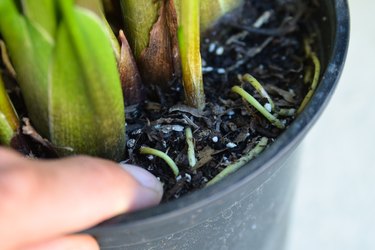
Growing and blooming potted callas need a medium that's consistently moist without ever becoming wet. Water whenever the surface of the medium feels dry. Moisture-deprived callas are stunted, with wilting yellow foliage. Overwatered ones are at risk of soft bulb rot. Stop watering while the leaves die back after the flowers fade, then keep them barely moist and store them at 50 degrees Fahrenheit before repotting them in late winter.
Video of the Day
Phosphorus for Flowers
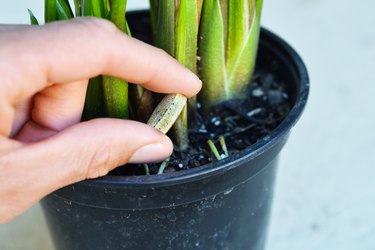
Potted callas also benefit from high-phosphorous plant food in their growing and blooming stages. Phosphorus encourages large, richly colored blooms. Granulated African violet food with a NPK ratio of 12-36-14 works well. Mix 1/2 teaspoon of the granules in 1 gallon of water and water the plants with it once every three weeks from the time the first leaves appear until they finish flowering. Give them only as much as you would during a regular watering session. Don't fertilize the dormant bulbs.
Keep Them Cool
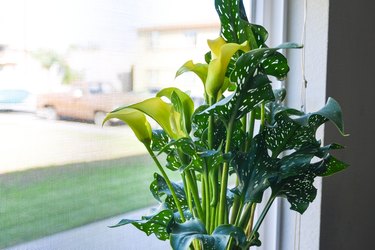
For abundant flowers, place indoor potted callas near bright windows but out of direct sun. Give outdoor ones a spot in full sun to partial shade, at least two hours of direct sun. Callas become heat stressed and may not flower at temperatures above 75 degrees Fahrenheit. Excessive warmth combined with insufficient light results in plants with short-lived blooms and stems too weak and long to support themselves. Soil-cooling mulch and afternoon shade help outdoor callas cope with high heat.
After the Show
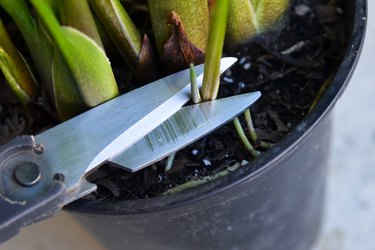
Expect potted callas to bloom for three to nine weeks, depending on their variety and growing conditions. After the blooms darken and close, cut their stalks off at the base with clean stem cutters disinfected between cuts in a solution of 1 part household bleach to 9 parts alcohol. Stop feeding and watering and let the foliage die back. Store the dormant bulbs in their pots until you're ready to repot.
Potential Problems
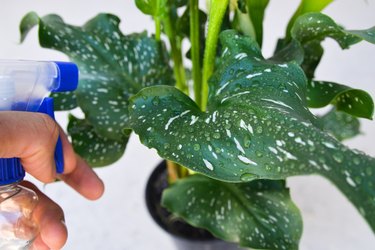
Potted callas' biggest threat is soft rot resulting from overwatering or overheating. Affected plants develop mushy stems and soft, foul-smelling bulbs before collapsing at the soil line. After discarding them and their growing medium, soak the pots in the disinfecting bleach solution for 30 minutes. Rinse and dry them before using. Aphids and web-spinning spider mites also target callas occasionally. Aphids excrete a sticky, transparent wasted called honeydew, while spider mites stipple or bronze the leaves. Control both by suffocating them with nontoxic, ready-to-use insecticidal soap. Spray the callas until all their surfaces drip, and repeat as needed to eliminate the pests. Wear protective clothing, waterproof gloves and safety goggles when spraying.